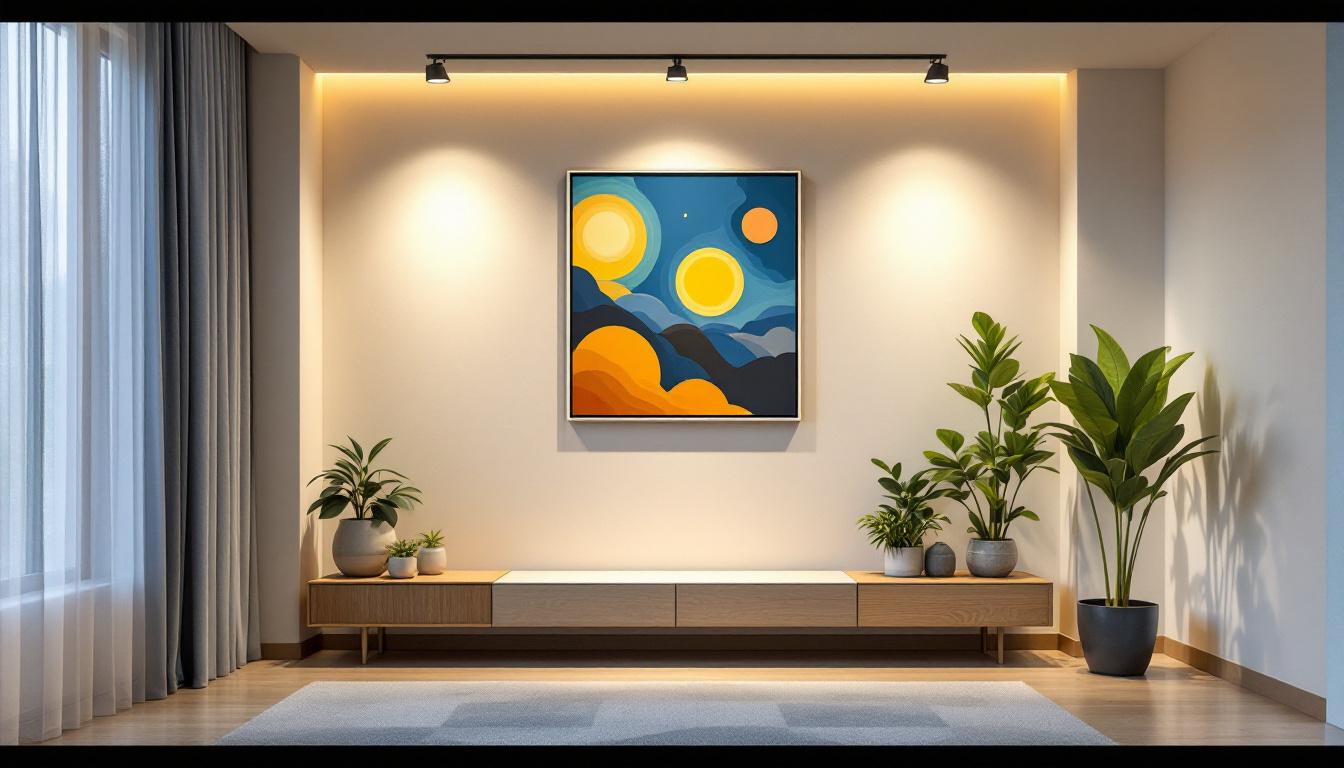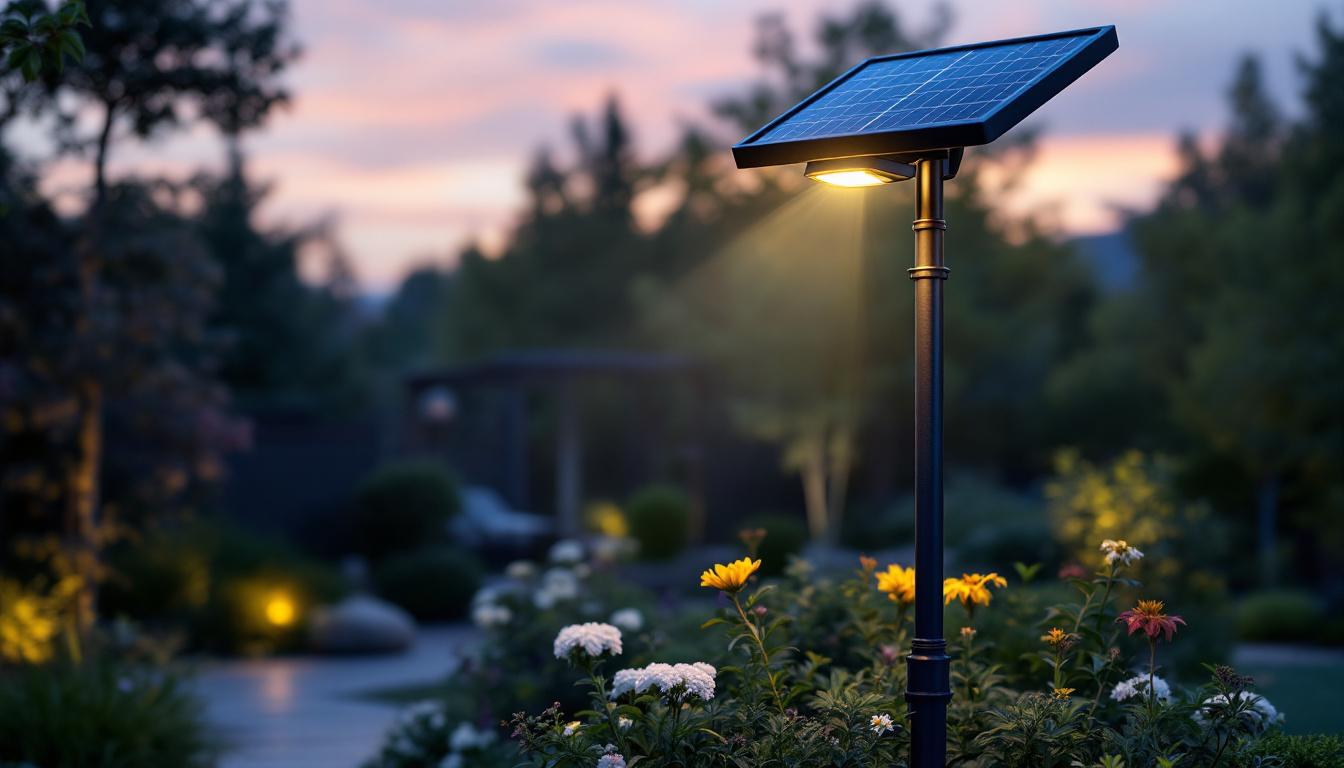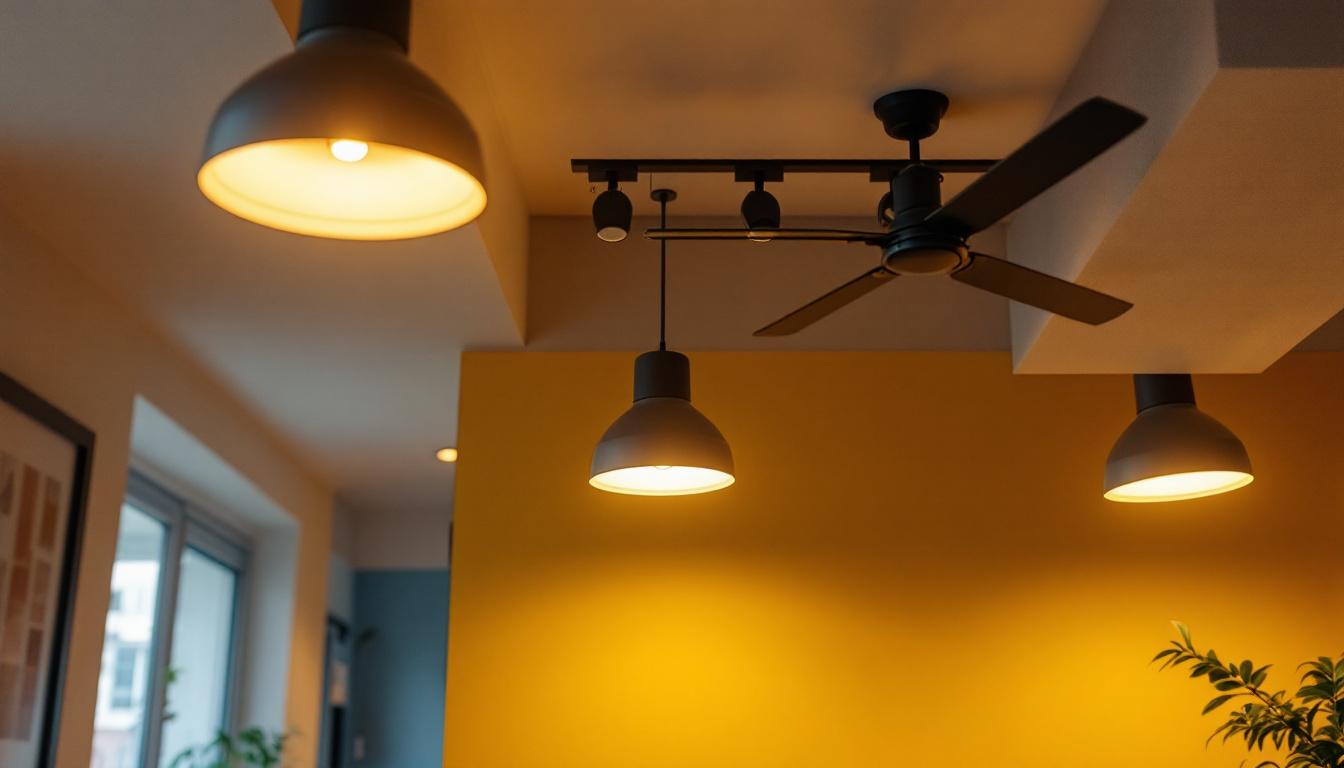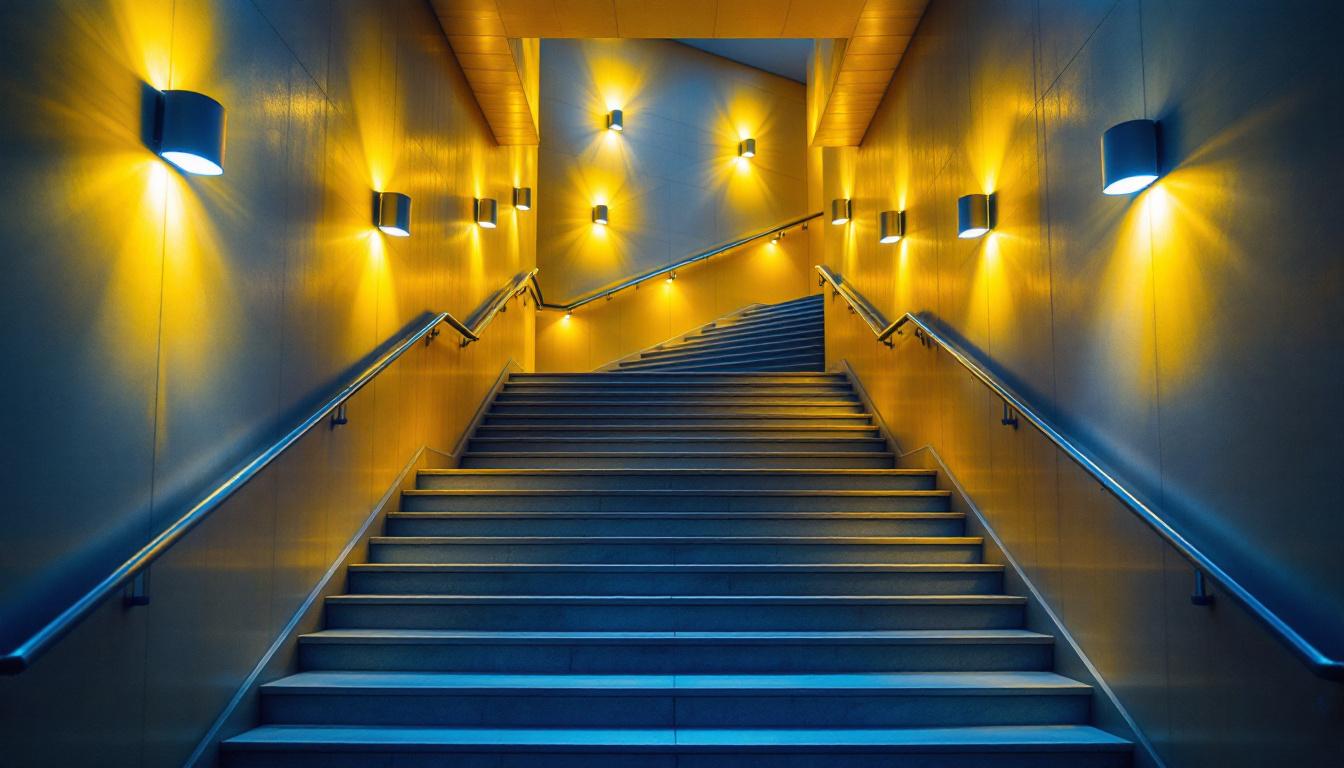
In the realm of interior design, lighting plays a pivotal role in enhancing the aesthetic appeal of spaces. Among the various lighting options available, recessed art lighting stands out as a sophisticated choice for highlighting artwork and architectural features. For lighting contractors, understanding the nuances of recessed art lighting is essential to deliver exceptional results for clients. This guide delves into the key considerations and best practices for selecting the right recessed art lighting solutions.
Recessed art lighting refers to fixtures that are installed within the ceiling or wall, providing a clean and unobtrusive way to illuminate artwork. This type of lighting not only enhances the visual impact of art pieces but also contributes to the overall ambiance of the room. The fixtures are typically designed to blend seamlessly with the architecture, creating a polished and modern look. By integrating these lights into the design of a space, homeowners can achieve a sophisticated aesthetic that draws attention to their art collection without overwhelming the room’s decor.
One of the primary advantages of recessed art lighting is its ability to direct light precisely where it is needed. This focused illumination can highlight textures, colors, and details in artwork that might otherwise go unnoticed. Additionally, recessed fixtures can be positioned to minimize glare, ensuring that the viewer’s experience is not compromised. The careful placement of these lights can create dramatic effects, enhancing the emotional response to the artwork and inviting viewers to engage more deeply with each piece.
Moreover, recessed lighting offers versatility in design. Available in various sizes, shapes, and finishes, these fixtures can complement any style, from contemporary to traditional. This adaptability makes them a popular choice among architects, designers, and homeowners alike. Furthermore, the use of dimmable options allows for adjustable brightness levels, enabling the mood of the space to shift according to the time of day or the occasion, making it a truly dynamic lighting solution.
There are several types of recessed fixtures suitable for art lighting, each with its unique characteristics. The most common types include adjustable, fixed, and wall-wash fixtures. Adjustable fixtures allow for the angle of light to be modified, providing flexibility in how artwork is illuminated. Fixed fixtures, on the other hand, provide a consistent beam of light that is ideal for pieces that require uniform illumination. This is particularly beneficial for galleries or exhibition spaces where consistency in lighting is crucial for the viewer’s experience.
Wall-wash fixtures are designed to cast light across a broad surface, making them perfect for illuminating large artworks or murals. Understanding the differences between these types will help contractors select the most appropriate fixtures based on the specific needs of each project. Additionally, some recessed fixtures come equipped with LED technology, which not only offers energy efficiency but also a longer lifespan compared to traditional bulbs. This means less frequent replacements and lower maintenance costs, making recessed art lighting a practical choice for both residential and commercial spaces. As technology advances, many options now include smart features, allowing users to control lighting remotely and create customized lighting scenes that enhance the overall art viewing experience.
Choosing the right recessed art lighting involves several critical considerations that can significantly impact the final outcome. From the type of fixture to the color temperature, each element plays a role in achieving the desired effect.
Color temperature is a crucial factor in art lighting, as it affects how colors are perceived. Measured in Kelvin (K), color temperature can range from warm (around 2700K) to cool (over 5000K). For art lighting, a color temperature between 3000K and 4000K is often recommended, as it provides a balance that enhances the vibrancy of colors without distorting them.
Contractors should consider the type of artwork being illuminated. For instance, paintings may benefit from a warmer light to enhance warmth and depth, while modern art may look better under cooler light. Understanding the nuances of color temperature can help in making informed decisions that elevate the artwork’s presentation. Additionally, it is beneficial to take into account the surrounding decor and natural light sources, as these factors can influence how the chosen color temperature interacts with the overall ambiance of the room. A well-thought-out lighting scheme can create a cohesive environment that complements the art while enhancing the viewer’s experience.
The beam angle of recessed fixtures determines how concentrated or dispersed the light will be. A narrow beam angle (15-30 degrees) is ideal for highlighting specific pieces of art, creating a spotlight effect that draws attention. Conversely, a wider beam angle (40 degrees and above) is better suited for illuminating larger areas or multiple pieces of art simultaneously.
When selecting fixtures, contractors should evaluate the layout of the artwork and the desired lighting effect. A thoughtful approach to beam angle can enhance the overall visual experience and ensure that the artwork is showcased effectively. Furthermore, experimenting with adjustable fixtures can provide versatility, allowing the angle of light to be modified based on different viewing angles or times of day. This adaptability can be particularly useful in spaces where art is frequently rotated or changed, ensuring that each piece receives the optimal lighting treatment it deserves.
The style and finish of recessed fixtures should align with the overall design aesthetic of the space. Options range from sleek and minimalistic designs to more decorative styles that can serve as a statement piece. Finishes such as matte white, brushed nickel, or black can either blend in with the ceiling or provide a contrasting element.
Contractors should collaborate with designers and clients to choose fixtures that not only meet functional needs but also contribute to the room’s overall design narrative. The right combination of style and finish can elevate the space and enhance the artwork being displayed. Additionally, the choice of materials used in the fixtures can affect the quality of light emitted; for example, glass lenses can soften the light and reduce glare, while metal finishes can create a more focused beam. By considering these factors, designers can ensure that the fixtures not only serve their purpose effectively but also enhance the aesthetic appeal of the entire room. In this way, recessed lighting becomes an integral part of the art experience rather than just a functional necessity.
Proper installation is paramount to achieving the desired lighting effects and ensuring the longevity of recessed art lighting fixtures. Lighting contractors must adhere to best practices to avoid common pitfalls and deliver high-quality results.
Before installation, it is essential to plan the layout of the recessed fixtures carefully. This involves considering the height of the ceiling, the size of the artwork, and the desired lighting effect. A well-thought-out layout will ensure that each piece is adequately illuminated without creating harsh shadows or glare.
Using a mock-up or digital design software can help visualize the placement of fixtures and make necessary adjustments before installation. This proactive approach can save time and resources, leading to a more efficient installation process.
When installing recessed art lighting, electrical considerations are critical. Contractors should ensure that the fixtures are compatible with the existing electrical system and that they meet local codes and regulations. This includes considering the wattage and voltage requirements of the fixtures to prevent overheating or electrical issues.
Additionally, incorporating dimmer switches can enhance the flexibility of the lighting design, allowing clients to adjust the brightness according to their preferences and the time of day. Proper wiring and electrical planning will contribute to a safe and effective lighting solution.
Once the fixtures are installed, testing and adjusting the lighting is crucial to achieving the desired effect. This involves turning on the lights and assessing the illumination quality, checking for any unwanted glare or shadows. Adjustments may be necessary to the angle of adjustable fixtures or to the placement of fixed fixtures to ensure optimal lighting.
Taking the time to fine-tune the lighting can make a significant difference in the overall presentation of the artwork. Contractors should encourage clients to review the lighting in different conditions, such as during the day and at night, to ensure satisfaction with the final result.
Once installed, maintaining recessed art lighting is essential to keep it functioning effectively and looking its best. Regular maintenance can help prevent issues and ensure that the lighting continues to enhance the artwork over time.
Dust and debris can accumulate on recessed fixtures, affecting their performance and appearance. Regular cleaning is necessary to maintain optimal light output and aesthetic appeal. Contractors should advise clients on the best cleaning methods, which typically involve using a soft, dry cloth to wipe down the fixtures and lenses.
In addition to cleaning the fixtures, it is essential to check the bulbs regularly. Replacing burnt-out bulbs promptly will ensure that the artwork remains well-lit and visually appealing. Contractors can offer maintenance packages to clients, providing ongoing support and care for their lighting systems.
As technology evolves, upgrading recessed art lighting fixtures may become necessary to take advantage of improved efficiency and performance. LED technology, for example, offers significant energy savings and longer lifespans compared to traditional incandescent bulbs.
Contractors should stay informed about the latest advancements in lighting technology and be prepared to recommend upgrades to clients when appropriate. This proactive approach can enhance the overall lighting experience and ensure that clients are satisfied with their investment.
Recessed art lighting is an invaluable tool for lighting contractors looking to enhance the beauty of artwork and architectural features within a space. By understanding the various types of fixtures, key considerations for selection, installation best practices, and maintenance requirements, contractors can deliver exceptional lighting solutions that meet the needs of their clients.
With careful planning and execution, recessed art lighting can transform any space, creating a captivating environment that showcases the artistry and design of the surroundings. By prioritizing quality and attention to detail, lighting contractors can build a reputation for excellence in the industry, ensuring lasting satisfaction for their clients.
Ready to elevate your lighting game with the finest recessed art lighting fixtures? Look no further than LumenWholesale, where we offer an extensive selection of high-quality, spec-grade lighting products at unbeatable wholesale prices. Say goodbye to local distributor markups and hello to superior lighting that meets the highest industry standards. With free shipping on bulk orders, you can trust that you’re getting premium lighting at the best value — all without hidden fees or compromises. Enhance your projects with the perfect blend of quality, affordability, and convenience. Visit LumenWholesale today and discover the best in wholesale lighting at the best value.

Explore the rising significance of lamp post lights with outlets in the lighting industry.

Discover effective strategies for lighting contractors to tackle common challenges when installing solar-powered post lights.

Discover how overhead ceiling lights can boost profitability in lighting installations.

Discover the crucial role lighting plays in staircase design and why it’s essential for lighting contractors to master this aspect.